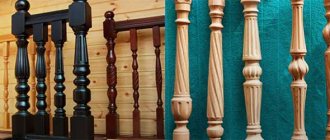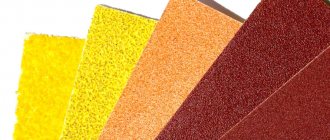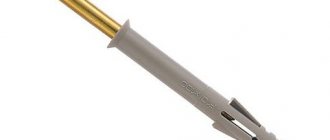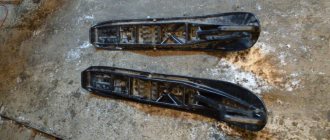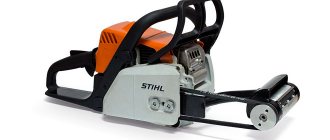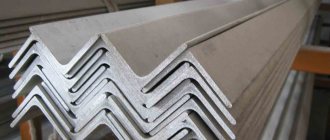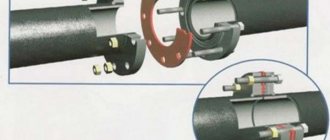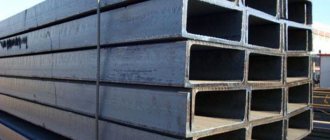Wooden bases do not lose their popularity for a long time, but the material has a disadvantage - it is not resistant to many external factors, which requires the creation of a protective layer; people often want to preserve the natural grain of the wood. Varnish coating is regularly chosen for different types of wood products; although the process seems simple, it requires certain knowledge to obtain a durable and high-quality result. The types of varnish impregnations and operating rules will be discussed in detail below.
Technology of applying varnish to a wooden surface. How to varnish wood correctly?
How to apply varnish to wood?
Our company's technologists will tell you about this. It is best to call us as different products require different approaches. Frequently asked question: what is the best way to apply varnish to wood?
A spray gun is ideal for this purpose (an air gun for nitro varnishes and an airless gun for water painters), but if you don’t have one, you can use a brush or roller. Synthetic brushes are well suited for water-based products, and natural bristles for solvent-borne products.
First we prepare the surface. Hairiness and any shallow gouging defects are removed by sanding. Movements should be carried out in the direction of the fibers. It is best to use an eccentric machine for sanding. Primary processing is carried out with coarse grain 80, finishing with grinding with P 150-240 abrasive.
FAQ:
- How to varnish wood without streaks?
The varnish layer should be as thin as possible. To do this, the applied composition is poured into a paint bath, where excess varnish is removed using a rolling surface. Coloring control is carried out using a table lamp installed at the edge. The light falling on the wood will indicate where there is a lot of varnish and where there is none at all. - How many layers of varnish should be applied to wood?
Usually at least two layers are applied. Some paint schemes require three coats. Between layers it is necessary to maintain the time recommended by the manufacturer for drying. - Is it necessary to coat the wood with varnish after impregnation with primer?
If you need aesthetics, then varnish is needed. If a structure that is not visible is being processed, it is not advisable to apply a varnish composition, and a primer will provide effective protection.
Wood tinting
The varnish itself can enhance the appearance of the wood. But sometimes you can pre-tint wood, imitating certain noble varieties. The toner itself is heated to 50 degrees before being applied to wood, after which natural drying occurs at a temperature of 20 degrees. Such products cannot be dried in the sun. Once dry, you can do another light polishing.
Depending on the type of wood, it is best to use the following types of toner:
- Walnut – pine, aspen, plum;
- Ebony - birch, pear, maple;
- Mahogany - linden, beech, walnut.
Important! In the case of tinting coniferous wood, you must first get rid of the resins. Simply wipe the surface with acetone, soda solution or gasoline.
Consumption of varnish per 1m2. Coverage schemes
The consumption of varnish per 1 m2 on wood depends on the density of the wood, the type of lumber (planed, sawn), the concentration of paintwork materials and pre-treatment. Typically, on a planed surface, consumption does not exceed 1 liter per 10 m2.
How to treat wood before varnishing so that the consumption of the latter is minimal?
To do this, use acrylic primer, which creates a film on the surface. The absorbency of lumber is reduced, and the consumption of varnish is small.
When painting with brushes, it is recommended to dilute the first layer of varnish with water so that its consistency becomes thinner. The approximate consumption rate of wood varnish per 1 m2 for the first layer is 130 ml. When applying varnish on the ground or as a second layer, the consumption can be halved.
Photo 7. Planken coated with Teknos varnish
Features of painting work in winter
In industrial conditions, the need for painting at low temperatures arises if the object needs to be delivered on time, or if there is an urgent need to renew the surface of the building. In everyday life, such urgency is rarely observed, but it still happens. There are a number of features of painting in the cold season:
- The most unfavorable temperature for using paints, enamels and primers in winter is from minus 5 degrees to plus 5 degrees. It’s better to work even in cold weather, because it is in the specified range that condensation will form on any surface. In the presence of moisture, the adhesion of the coating greatly deteriorates and the properties of the paints change. The quality of the coating decreases and it will not last long.
- If you decide to paint facades in cold weather, you need to remember that facade paint of any brand takes 2-3 times longer to dry than in warm weather. To get a high-quality coating, you need to use a heat gun for drying or stretch the film over scaffolding.
- You should choose only enamel and primer suitable for the winter season. Using the wrong material will cause it to freeze, and the ice will prevent the product from being applied to the walls. The final result of the work depends on the quality of the paint.
A number of modern paints are perfectly applied at zero temperatures and in frost, some can be used down to –20 degrees. There are good products that are resistant to temperature changes. It is important that the temperature of the paint and varnish material itself be positive during operation. If the material is cold, it is placed in a container in a bucket of warm water.
What is moisture-resistant varnish. Do I need to pay extra for it?
Moisture-resistant wood varnish does not allow moisture to pass through and does not release it back, as a result of which water does not accumulate under the film and does not destroy the paint layer. However, moisture-resistant varnish is more expensive, so it is advisable to use it in conditions with high humidity - a street where rain and snow have a detrimental effect on wood, a bathroom, a kitchen, a sauna. If the room is dry, there is no point in overpaying for moisture resistance.
What varnishes have a smell? Is it harmful to human health?
Paints and varnishes based on organic solvents are endowed with a pungent odor that causes headaches, nausea or allergies in humans. Such symptoms indicate pathological processes in the body. Paintwork materials with a strong odor are certainly harmful. Such products must be used for their intended purpose, in specially equipped rooms with fresh ventilation.
Odorless, water-based wood varnish is an absolutely safe product for humans. Water-soluble varnishes are very popular today. They are environmentally friendly and have excellent technical characteristics. The coating is aesthetically pleasing, lasts a long time, and does not crack under the influence of sunlight.
No. 6. Nitrocellulose varnishes
This varnish is a mixture of cellulose nitrate, organic solvent, resins and plasticizer. This is a fairly popular wood varnish for interior work. It is well suited for processing furniture and can produce a matte or glossy surface, but is not suitable for protecting floors.
The main advantages of varnish:
- high drying speed, from 20 minutes to 5 hours, average time – 1 hour;
- high polishability;
- varnish allows you to create a smooth hard coating with excellent decorative qualities;
- the composition penetrates deep into the pores of wood and provides good protection.
Among the disadvantages , it is worth noting the unpleasant odor during drying - toxic solvents evaporate, so during work it is necessary to carefully protect the respiratory tract. After drying, the varnish is absolutely safe for health. The composition does not protect wood very well from moisture and sunlight, the durability of the coating is average, so it is used for treating furniture and walls indoors .
Consumption
In order to correctly calculate how many cans of varnish will be needed to treat a certain area, you should make some calculations.
First you need to pay attention to the criteria that play an important role when spending funds:
- Wood surface. Wood with fine pores always requires less varnish than surfaces with deep pores. For example, processing beech or pine will cost much less than painting ash or oak.
- Wood sanding quality. A well-polished surface always requires little varnish. For high-quality sanding of the material, you should use sandpaper with P100 grain. To create the second layer, use P220 sandpaper.
- Viscosity. Thick varnish will have a high consumption. To reduce it slightly, the first and second layers of application can be carried out with varnish diluted with a solvent. If the product is water-based, then you can add a little water to make it more liquid.
- Method of application. If you use spraying, the consumption will be minimal. Using a brush or roller increases the product consumption significantly.
On average, varnish consumption per 1 m² is 100–125 ml. It will take less to create a second coat of varnish. So, per 1 m² you will need only 80–100 ml. But the factors described above play a decisive role, so for an accurate calculation you can purchase a can of varnish, use it and measure the area. This will allow you to make a very accurate calculation.
Application of primer
Some people, not knowing all the features of wood and varnishes, consider this work pointless, a waste of money and time.
Why do you need soil?
- Additional leveling of the base. Even the finest sandpaper will not provide perfect smoothness. Firstly, the grains have a certain size, so microscopic stripes will definitely remain on the wood. Visually this is not noticeable, but after coating with varnish it can appear. Secondly, you need to make an “adjustment” for your own accuracy. To polish the workpiece as much as possible, you will need both patience and time. As a rule, most of us lack both.
- Increasing the strength of the “adhesion” of varnish to wood. The fact that any wood is hygroscopic does not mean that the protective (decorative) layer will be securely attached to it.
- Reduced varnish consumption. This requires no explanation. The product is applied in the thinnest layer on a perfectly flat base. Moreover, as a rule, a one-time coating of wood is sufficient.
What is used
- Liquid wax (preferably in cans, in the form of an aerosol). You can prepare it yourself by dissolving it in turpentine.
- Primers of the KF series. Numbers from 1 or more.
- Wood glue diluted in water (200 g per liter).
- A mixture of wood powder and PVA.
- Talc or chalk powder. Just dilute it in water and add pigment if necessary.
Application technology
The number of layers is determined based on the condition of the wood. There is only one recommendation - do not start recoating until the applied layer is completely absorbed into the wood. Before starting this work, it is necessary to clean the base from any dust that will remain after sanding.
Manufacturers
Today, many well-known companies offer a wide selection of high-quality wood varnishes.
Italian products are in great demand. Borma Wachs has established itself as a high-quality and reliable manufacturer of products intended for processing natural wood.
The Italian brand Sayerlack offers more than 3,500 items, which fully satisfies the needs of woodworkers and furniture manufacturers.
The Finnish company Tikkurila is a popular manufacturer of water-based varnishes for coating parquet boards. It uses exclusively new technologies and computerized equipment to create high-quality and reliable products. The brand offers a wide range of wood varnishes that are characterized by increased wear resistance.
The Swedish company Bona has been offering high-quality water-based paints and varnishes that do not have a characteristic odor for several decades. The brand has its own research center, where innovative products are developed.
This center developed a unique varnish made from polyurethane particles Traffic . It allows you to give the coating increased wear resistance, as well as protect it from mechanical influences, as a result, Traffic varnish is used to cover parquet in high-traffic areas.
The German brand Berger offers a wide range of water-based parquet varnishes, characterized by excellent quality. Berger Aqua-Seal polyurethane varnish is in great demand, which not only has increased wear resistance, but also protects wooden parquet from chemical attack. The only exceptions are nitro solvents, since they can damage the structure.
The Italian company Vermeister is a well-known manufacturer of water-based polyurethane varnishes, which include two components and are designed to create a matte, semi-matte and semi-gloss surface. Aqua Play 2K varnish hardens in just four hours. The company offers products at reasonable prices.
No. 12. Alcohol varnish
These are not very common compositions, the scope of which is very limited. Alcohol varnishes (varnishes) are made based on ethyl alcohol and resins. The alcohol evaporates quickly, so the drying time of the varnish is minimal - from 20 minutes to an hour. The coating has a beautiful shine, but protects the surface very poorly from moisture. The composition is used in the processing of musical instruments , less often in carpentry for processing furniture .
Useful tips
To properly apply varnish to a wooden surface, you should follow simple rules:
- The surface of natural wood needs to be sanded.
- If the wood is coated with varnish or paint, then these layers must be removed. You can use sandpaper or a special remover.
- All dust must be removed after sanding.
- Prime the surface. This will avoid the formation of bubbles and other visual defects.
- Apply varnish to the wooden surface.
There are several ways to varnish a wooden surface:
- The brush is ideal for processing small parts, as well as for applying product in hard-to-reach places. To avoid streaks, you should use brushes that have “fluff” at the tips of the bristles.
- A roller is a good choice for applying varnish over large areas. When choosing a roller, you should give preference to models with a pile of no more than 5 mm.
- Spraying is a convenient way of painting using a spray gun and compressor. This option allows you not only to save varnish consumption, but also to quickly and easily treat even hard-to-reach places.
Before use, the varnish should be mixed thoroughly, especially if the product includes two components. This will have a positive effect on the durability of the coating.
If the varnish needs to be applied in several layers, then you need not only to wait for the previous layer to dry completely, but also to go over the coating with sandpaper and then remove all the dust.
The number of layers depends on what can be processed. For example, to paint furniture, two layers will be enough, but for flooring you will need to apply varnish three times.
What paints are used in winter
Enamels and primers that are used at subzero temperatures are varied. Their properties:
- do not freeze in the cold,
- suitable for different types of materials,
- can be operated at temperatures down to –10…–20 degrees,
- form an elastic layer,
- Dries faster compared to regular paint.
Water-based paints
This type of paint is most in demand in winter. The products of the companies Dufa and Batilith, Dulux and Tikkurila, which produce many types of corresponding paints and varnishes, are very popular. Good frost-resistant paints are produced by the German company Caparol. A number of manufacturers produce frost-resistant water-based paint AK-115, which can withstand temperatures down to -20 degrees below zero. Other known materials:
- Parade f20,
- Lakra,
- Alpa Façade,
- Brite Professional primer,
- Vincent Muralith F1.
Oil paints
Oil-based materials are almost never used now. Their properties are much inferior to water-based paints; their service life is no more than 2–3 years. The products need to be diluted with drying oil and special solvents. Only some paints marked PF, MA, GF are suitable for working in cold weather.
Aerosol paints
Enamels in cylinders are used, for the most part, for painting batteries, cars, and plastic products. They are quite expensive, but create high-quality coverage. Popular brands are:
- Maxi color,
- Colomix,
- Dupli-color,
- Vixen.
Most paints of this type can be used down to –15 degrees.
What is the difference between wood varnish for exterior and interior use?
Experts divide paint and varnish materials according to several criteria, one of which is operating conditions. Thus, products located in the open air are subject to the negative effects of natural factors, due to which the tree constantly swells and contracts. In this regard, varnishes for external use form an elastic film on the treated surfaces, which allows the wood to easily withstand regular changes in size.
At the same time, it is impossible to use compositions intended for interior work for these purposes - such materials do not have sufficient elasticity, and therefore will not be able to provide the surface with the necessary protection.
No. 11. Polyester varnish
Multicomponent composition based on polyester resins. It is applied with a special gun and requires high professionalism and sufficient precision in work. After drying, a fairly thick, durable film is formed, which protects well from moisture and aggressive substances. Varnish is used to treat floors, furniture and some musical instruments.
Reviews: advantages and disadvantages
Varnishes for exterior use have a number of advantages, the main ones being: high protective performance and the ability to preserve the unique texture of wood. High-quality compositions have increased wear resistance, resistance to ultraviolet radiation and moisture. At the same time, the varnish coating also provides the wood with protection from rotting and fire, which has an extremely positive effect on the service life of the product.
Some experts and consumers consider the disadvantages of varnish compositions to be a rather long drying time - it often takes more than 24 hours to completely dry the coating.
Where to buy wood varnish?
In Moscow
In Moscow, you can purchase varnish for exterior woodwork from companies such as:
- “Paints on the Sofa”: website: https://kraskinadivane.ru;
- address: Moscow, Taldomskaya street, building 17, building 1;
- telephone.
- website: https://stroycolorit.ru;
- website: https://www.krasko.ru;
In St. Petersburg
In St. Petersburg, the following organizations sell wood varnishes:
- “Petrovich”: website: https://petrovich.ru;
- address: St. Petersburg, 6th Verkhny lane, building 12A;
- telephone.
- website: https://olvia-color.ru;
- website: https://vlagoshchit.rf;
Thus, a properly selected varnish for exterior use can not only reliably protect wood from the harmful effects of external factors, but also preserve its natural texture almost unchanged.
In the next video you will find a review of Kudo KU-904x tinting varnish for wood.
